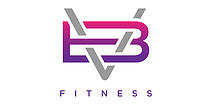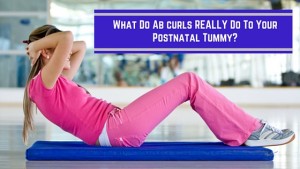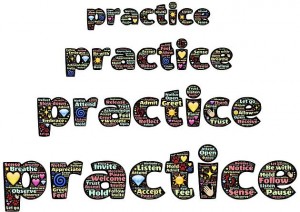I’ve talked a lot on social media about crunches and sit-ups being a no-no when you’re postnatal, but a video I shared on my Facebook page recently seemed to really hit the mark. Aside from the comments and shares, I had quite a few mums tell me how clear it made things for them.
So I thought it was about time I wrote a blog on this. Unfortunately there’s a lot of bad advice out there when it comes to postnatal exercise, and many new mums do crunches to try and flatten their tummies, so we need to keep spreading the word that IT DOESN’T WORK!
Before I carry on, here’s the video:
Sit-ups, or any variation of this movement that works the six pack muscle, can cause more harm than good.
So, if you’ve recently had a baby and you’re doing sit-ups, STOP them immediately!
During pregnancy the first thing your six-pack muscle (Rectus Abdominis) does is lengthen, vertically. Then, as your pregnancy develops, and your baby grows and your bump gets bigger, this muscle starts to separate around your belly button. This is referred to as Diastasis Recti. The abdominals can take time to re-align after your baby has been born, so for several weeks and indeed months (or for some, years) after birth, your six-pack muscle remains in a lengthened, separated state.
The first thing we need to do regarding this area is actually focus on connecting to your pelvic floor which is a bit like a sling of muscles supporting you from underneath, and the deep abdominal muscles which lie under your six-pack muscle. This deep muscle is known as the Transversus Abdominis (TVA).
Strengthening the abdominals after birth, and specifically the TVA and pelvic floor, is a bit like building a house.
If your house has a solid framework and foundations, it will always be strong. If you work on strengthening the deepest muscles first, then focus on the next layer, then the next layer after that, then your abdominals will re-align to their original structure.
What do crunches do? They strengthen and work the six-pack muscle. During pregnancy, we know that this muscle has lengthened and separated. If you don’t have a solid foundation underneath this six-pack muscle before you work it (I’m talking about your core and pelvic floor here), then by doing crunches, you’re actually going to make your separation worse. In other words, any separation you had after birth, will now be wider, because you’re forcing the muscle to strengthen, when it’s still in a weakened, separated state. The amount of abdominal pressure placed on the six-pack muscle when performing a sit-up, forces it to separate further apart. As shown in my video.
And here’s what the pressure can do to your pelvic floor:
I follow a system with postnatal clients which involves locating the TVA first. We connect to and strengthen that, along with lots of focus on the pelvic floor. Once function in these muscle groups has been gained, then strength work can be done.
So, I hear you ask: “Why do people do sit-ups?”. Well, in most cases, people do sit-ups in the hope that they will get themselves a toned, flat stomach and a noticeable six-pack. I’m here to tell you that doing sit-ups AREN’T going to help you (as a postnatal woman), or anyone you know, male or female, get a six-pack. Your body needs to be extremely lean to do this, which has nothing to do with sit-ups! (See this blog for my thoughts on having visible abs as a fitness goal.)
As a final point: I don’t even use sit-ups for clients who don’t have diastasis recti. As explained on athletic coach Eric Cressey’s website here:
“World-renowned low-back researcher Dr. Stuart McGill says that we have a finite number of flexion/extension cycles in our back until injury is caused. That number is different for every person, but the bottom line is that by performing exercises like crunches and sit-ups, you’re increasing your risk for injury with every rep!”
Plus, they’re promoting a rounded posture, which is the very one I’m usually trying to get clients out of, after too much time sat at a desk!
I do sometimes use crunches, but never in the early postnatal phase, and doing a crunch where you are engaging your transverse abdominis is very different to an uncontrolled crunch. So I recommend having a professional (physio, trainer) teach you how to do one properly, and also assess whether you need to do them.
Please share this blog and forward it to anyone you think might find it useful, as unfortunately I still see a lot of ab dominant work recommended for postnatal women- this myth needs busting!
For help with your postnatal fitness click here to find out more about my next Restore My Core course, or get my 10 Tips for getting back in shape here. You can also read what core exercises ARE safe and effective when you’re postnatal here.




